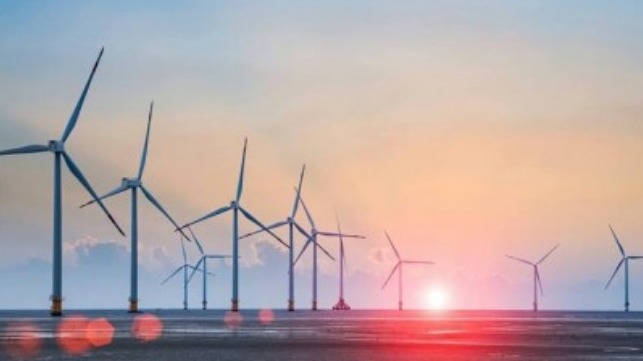Report: $27B Investment Needed to Meet Offshore Wind Power 2030 Targets

The offshore wind sector is navigating uncharted waters with a new set of challenges emerging. While governments have set ambitious targets for the buildout of the sector, many of the leading developers are citing the changing economics of the market, which is causing some of them to review their plans in part due to supply chain pressures with are contributing to cost escalations.
In a new analysis, energy consultancy Wood Mackenzie provides insights into the current supply chain constraints in the offshore wind sector. They conclude that the global offshore wind supply chain will require $27 billion of secured investment by 2026 if it is to meet a fivefold growth in annual installations (excluding China) by 2030.
This figure is based on Wood Mackenzie’s base outlook, which forecasts annual capacity additions to hit 30 GW by 2030. This however they acknowledge is lower than the policymakers’ offshore wind targets, which would require nearly 80 GW per year. To hit this goal set by governments across the world, Wood Mackenzie reports the supply chain would require more than an estimated $100 billion in investment.
“Nearly 80 GW of annual installations to meet all government targets is not realistic, even achieving our forecasted 30 GW will prove unrealistic if there is no immediate investment in the supply chain,” said Chris Seiple, Vice Chair, Power and Renewables at Wood Mackenzie and the co-author of the report.
Some 24 GW of projects scheduled to come online between 2025 and 2027 have secured a route to market, through either some form of subsidy or power purchase agreement. The report however highlights that many projects are yet to make financial investment decisions (FID), where developers look to firm up projects and confirm that they will proceed with construction.
Some of the major developers have said that the supply chain challenges and cost increases have dramatically changed the finances of their projects. Some of the developers have delayed their FID as they seek to renegotiate offtake contracts given the inflationary pressures. Two of the leading projects planned for Massachusetts found themselves in a struggle last year with state regulators when they called for changes to their power agreements. Government officials demanded that the companies proceed under their agreements, while in July 2023 Vattenfall, the major Swedish energy company, announced it was shelving the Norfolk Boreas project in the UK due to the changing economics. The company chose to take a $500 million impairment charge instead of proceeding with the project which called for 1.4 GW as part of a 3.6 GW zone.
Even where companies are not delaying their projects, some are experiencing increasing delays and shortages in the supply chain. As a result, the average lead time of a new offshore project is typically five years.
According to Wood Mackenzie, delaying these projects at the FID stage will shift anticipated equipment demand from 2025-27 to 2028- 30. If this occurs, it means certain projects might not be built at all in 2028-30.
Some of the solutions the report offers on scaling offshore wind supply chains revolve around government policy.
“The opportunity to invest is often driven by government offtake remuneration schemes, legislation enabling utilities to recover their purchase power costs, and the sale of leasing rights and plans to build out the transmission system. In addition, governments could also dictate that some portion of a project’s equipment be manufactured locally,” notes the report.

that matters most
Get the latest maritime news delivered to your inbox daily.
